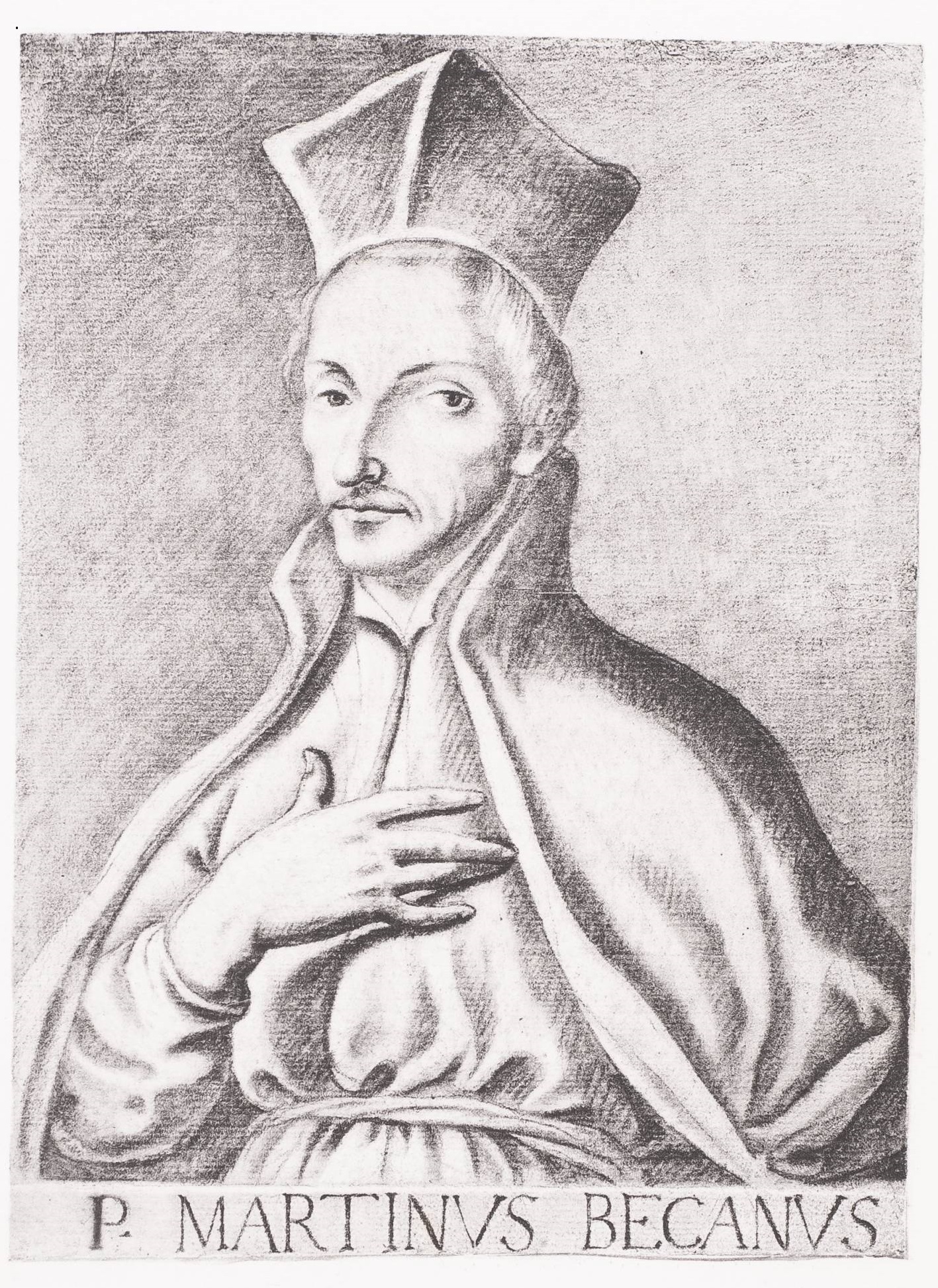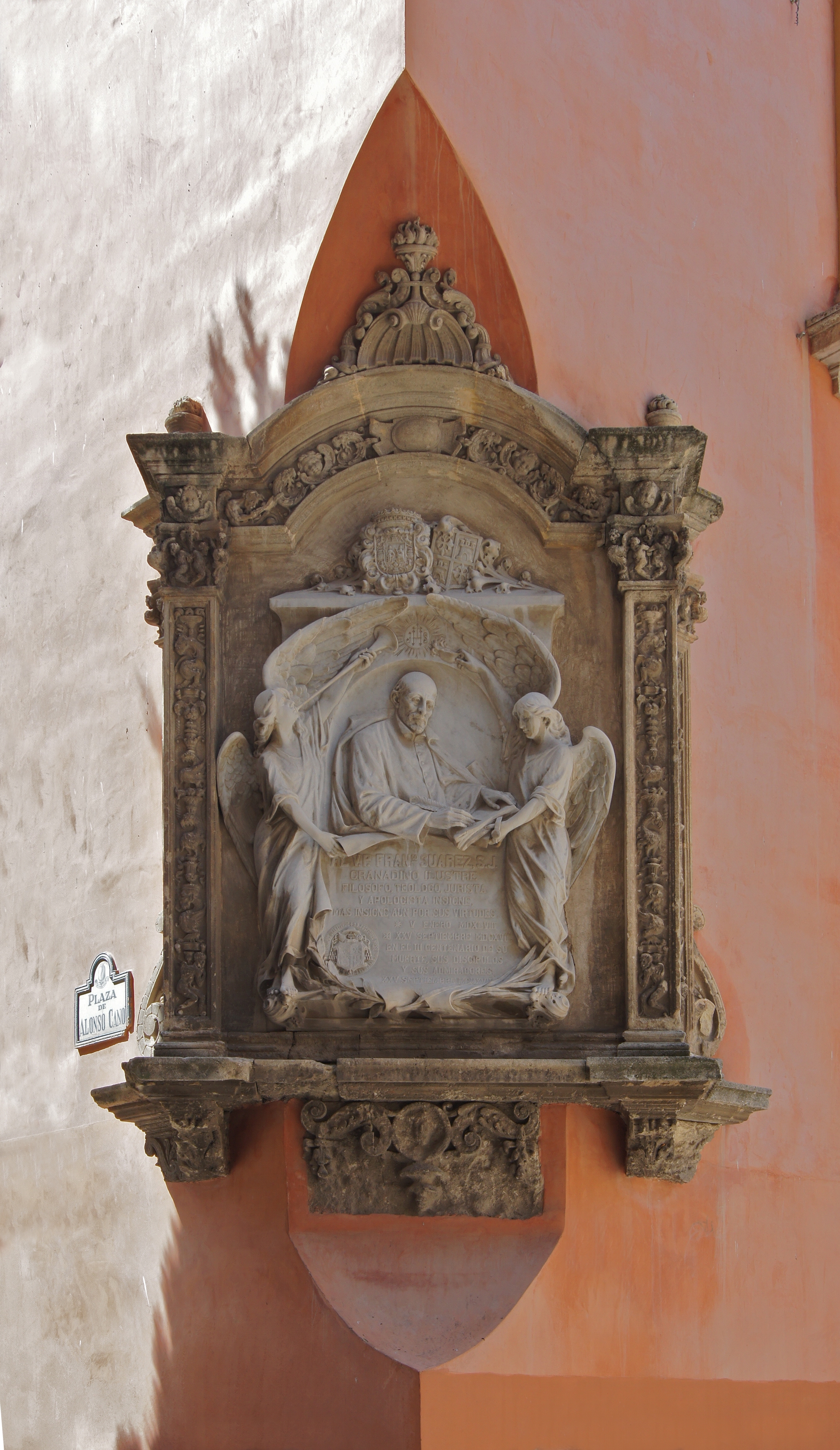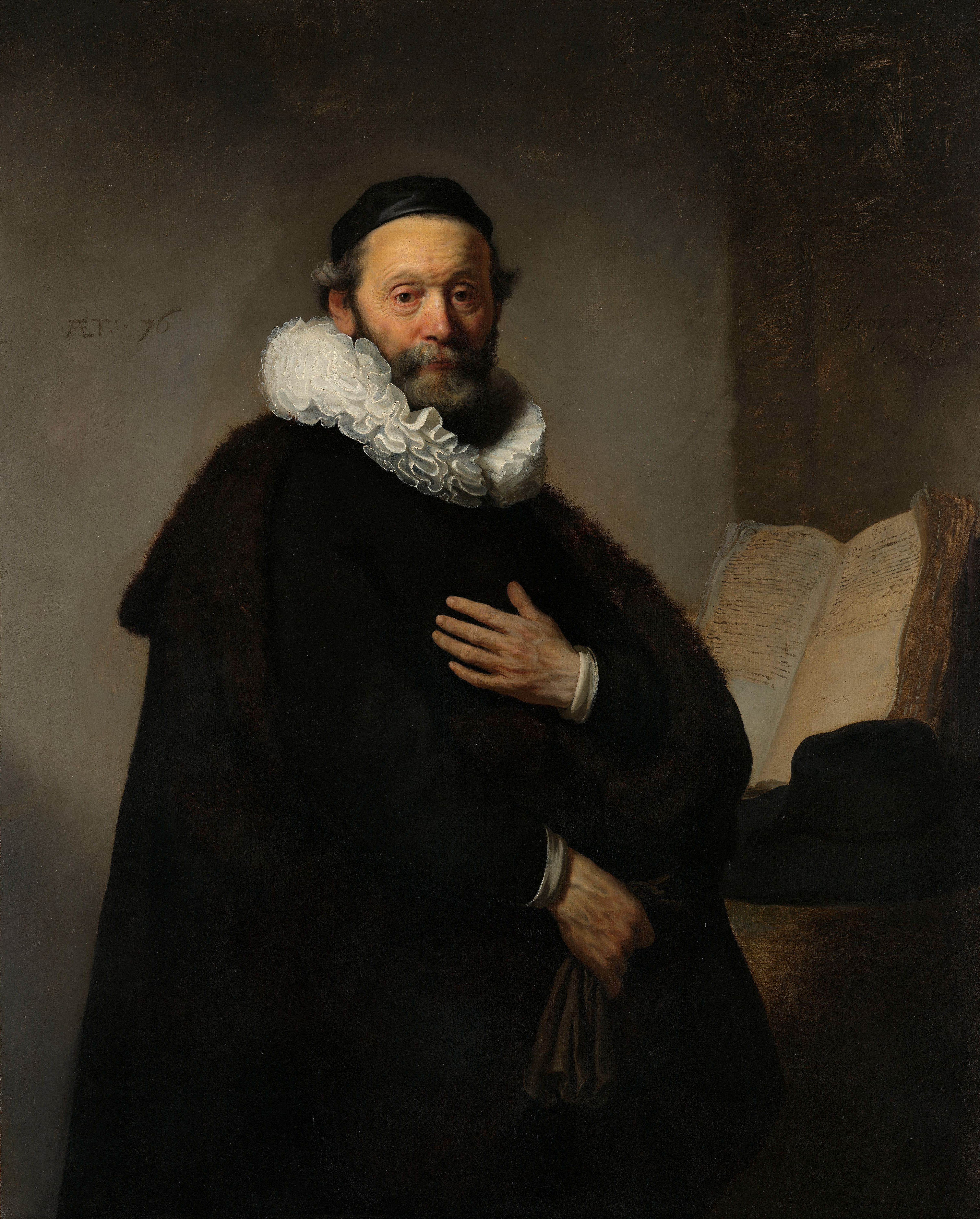|
Sibrandus Lubbertus
Sibrandus Lubbertus (c.1555–1625) (also referred to as Sibrand Lubbert or Sybrandus Lubbertus) was a Dutch Calvinist theologian and was a professor of theology at the University of Franeker for forty years from the institute's foundation in 1585. He was a prominent participant in the Synod of Dort (1618–1619). His primary works were to counter Roman Catholic doctrine (especially that championed by Robert Bellarmine) and to oppose Socinianism and Arminianism. Life Lubbertus was born in Langwarden in 1555. He studied Divinity in Wittenberg in 1574 and in Geneva in 1576, where one of his professors was Theodore Beza. He also studied in Marburg in 1578 and at Neustadt an der Weinstraße in 1580, where one of his teachers was Zacharias Ursinus. He earned his doctorate in theology on 22 June 1587 in Heidelberg under Daniel Tossanus. Around 1592 Hadrian à Saravia, who had left the Netherlands for England, wrote in his ''De Gradibus'' complaining that the Netherlands' governmen ... [...More Info...] [...Related Items...] OR: [Wikipedia] [Google] [Baidu] |
Daniel Tossanus
Daniel Tossanus (Toussain, Toussaint) (1541–1602) was a French Reformed theologian. Life He was born at Montbéliard on 15 July 1541, the son of Pierre Toussain. He was educated at Basel and Tübingen. Returning to France he preached for six months in his native town, and went to Orléans, 1560, where, after being a teacher of Hebrew, he was ordained minister of the local Reformed church in 1561. In 1568 he was forced to flee with other Protestants, but was soon discovered and imprisoned for two weeks. He then left with his family to Montargis, where he was protected by the duchess of Ferrara until the king of France demanded the expulsion of all Huguenots. He now sought refuge in Sancerre, and after a year returned to Montbéliard. Here he was charged with teaching Calvinistic and Zwinglian heresies; his reply was an affirmation of his Lutheran belief. In 1571 he was recalled to Orléans, and held service in the castle Isle, a few miles away. At the news of the massacre on St ... [...More Info...] [...Related Items...] OR: [Wikipedia] [Google] [Baidu] |
Martinus Becanus
Martinus Becanus (6 January 1563 – 24 January 1624) was a Dutch-born Jesuit priest, known as a theologian and controversialist. Life He was born ''Maarten Schellekens'' in Hilvarenbeek in North Brabant; Schellekens is a patronymic and he adopted a Latinized form of the surname Van (Hilvaren)Beek. He entered the Society of Jesus on 22 March 1583, and taught Theology for twenty-two years at Würzburg, Mainz, and Vienna. He died in Vienna, where he was the confessor to the Emperor Ferdinand II. Works A first class controversialist and prolific writer Becanus is the author of some 37 books, most of them works of polemics. *He developed the art of controversy and taught it in his book : ''Manuale controversiarum huius temporis'' published in Wurzburg (1623), that went into more than 50 editions (in the shortened version until the late 18th century). *In ''De fide haereticis servanda (1607)'' he defended the view that Protestants and Catholics should observe contracts concluded ... [...More Info...] [...Related Items...] OR: [Wikipedia] [Google] [Baidu] |
Francisco Suárez
Francisco Suárez, (5 January 1548 – 25 September 1617) was a Spanish Jesuit priest, philosopher and theologian, one of the leading figures of the School of Salamanca movement, and generally regarded among the greatest scholastics after Thomas Aquinas. His work is considered a turning point in the history of second scholasticism, marking the transition from its Renaissance to its Baroque phases. According to Christopher Shields and Daniel Schwartz, "figures as distinct from one another in place, time, and philosophical orientation as Leibniz, Grotius, Pufendorf, Schopenhauer and Heidegger, all found reason to cite him as a source of inspiration and influence." Life and career Francisco Suárez, who had Jewish ( converso) ancestry, was born in Granada, Andalusia (southern Spain), on 5 January 1548. After 3 years of preliminary studies from age 10 onwards, in 1561 Suárez matriculated at the University of Salamanca, and studied law. In 1564, at age sixteen, Suárez entered the ... [...More Info...] [...Related Items...] OR: [Wikipedia] [Google] [Baidu] |
Oath Of Allegiance (1606)
The Oath of Allegiance of 1606 was an oath requiring English Catholics to swear allegiance to James I over the Pope. It was adopted by Parliament the year after the Gunpowder Plot of 1605 (see Popish Recusants Act 1605). The oath was proclaimed law on 22 June 1606; it was also called the ''Oath of Obedience'' ( la, juramentum fidelitatis). Whatever effect it had on the loyalty of his subjects, it caused an international controversy lasting a decade and more. Oath The oath was proclaimed law on 22 June 1606. It contained seven affirmations, and was targeted on "activist political ideology". The oath in part read: "I, A.B. do truly and sincerely acknowledge, profess, testify, and declare in my conscience before God and the world, that our Sovereign Lord King James, is lawful and rightful King of this realm, and of all other in his Majesties Dominions and Countries; And that the Pope neither of himself, nor by any authorities of the Church or See of Rome, or by any means with any ot ... [...More Info...] [...Related Items...] OR: [Wikipedia] [Google] [Baidu] |
James I Of England And Religious Issues
James VI and I (James Stuart) (June 19, 1566 – March 27, 1625), King of Scots, King of England, and King of Ireland, faced many complicated religious challenges during his reigns in Scotland and England. In Scotland, he inherited a reformed church, the Kirk, which was attempting to rid the country of bishops, dioceses, and parishes and establish a fully Presbyterian system, run by ministers and elders. However, James saw the bishops as the natural allies of the monarchy and frequently came into conflict with the Kirk in his sustained effort to reintroduce an episcopal polity to Scotland. On his succession to the English throne, James was impressed by the church system he found there, which still adhered to an episcopate and supported the monarch's position as the head of the church. On the other hand, there were many more Roman Catholics in England than in Scotland, and James inherited a set of penal laws which he was constantly exhorted to enforce against them. Before asc ... [...More Info...] [...Related Items...] OR: [Wikipedia] [Google] [Baidu] |
Johannes Wtenbogaert
Johannes Wtenbogaert (Also Jan or Hans, Uytenbogaert or Uitenbogaert.) (11 February 1557 – 4 September 1644) was a Dutch Protestant minister, a leader of the Remonstrants. Life Born at Utrecht, he was brought up a Roman Catholic, and attended the school of St. Jerome there. He intended a legal career, but gave it up from 1578 with Catholicism when required to cease hearing the sermons of the evangelical Huibert Duifhuis (1531–1581). He went to Arnhem and the service of Count John of Nassau, and then returned to Utrecht to become a pastor. He found conflict between Duifhuis and a group of Calvinists called Consistorials. In 1580 Wtenbogaert was sent at the city's expense to study theology in Geneva and came into contact with Theodore Beza; but his sympathies were with Jacobus Arminius. On his return to Utrecht in 1584 he found himself in an awkward position in the continuing discord. Eventually in 1590 the magistrates removed the preachers from both sides. He then went to Th ... [...More Info...] [...Related Items...] OR: [Wikipedia] [Google] [Baidu] |
James I Of England
James VI and I (James Charles Stuart; 19 June 1566 – 27 March 1625) was King of Scotland as James VI from 24 July 1567 and King of England and King of Ireland, Ireland as James I from the Union of the Crowns, union of the Scottish and English crowns on 24 March 1603 until his death in 1625. The kingdoms of Kingdom of Scotland, Scotland and Kingdom of England, England were individual sovereign states, with their own parliaments, judiciaries, and laws, though both were ruled by James in personal union. James was the son of Mary, Queen of Scots, and a great-great-grandson of Henry VII of England, Henry VII, King of England and Lord of Ireland, and thus a potential successor to all three thrones. He succeeded to the Scottish throne at the age of thirteen months, after his mother was compelled to abdicate in his favour. Four different regents governed during his minority, which ended officially in 1578, though he did not gain full control of his government until 1583. In 1603, ... [...More Info...] [...Related Items...] OR: [Wikipedia] [Google] [Baidu] |
George Abbot (bishop)
George Abbot (29 October 15624 August 1633) was an English divine who was Archbishop of Canterbury from 1611 to 1633. He also served as the fourth Chancellor of the University of Dublin, from 1612 to 1633. ''Chambers Biographical Dictionary'' describes him as " sincere but narrow-minded Calvinist". Among his five brothers, Robert became Bishop of Salisbury and Maurice became Lord Mayor of London. He was a translator of the King James Version of the bible. Life and career Early years Born at Guildford in Surrey, where his father Maurice Abbot (died 1606) was a cloth worker, he was taught at the Royal Grammar School, Guildford. According to an eighteenth-century biographical dictionary, when Abbot's mother was pregnant with him she had a dream in which she was told that if she ate a pike her child would be a son and rise to great prominence. Some time afterwards she accidentally caught a pike while fetching water from the River Wey and it "being reported to some gentlemen in th ... [...More Info...] [...Related Items...] OR: [Wikipedia] [Google] [Baidu] |
Petrus Plancius
Petrus Plancius (; 1552 – 15 May 1622) was a Dutch-Flemish astronomer, cartographer and clergyman. He was born as Pieter Platevoet in Dranouter, now in Heuvelland, West Flanders. He studied theology in Germany and England. At the age of 24 he became a minister in the Dutch Reformed Church. Plancius fled from Brussels to Amsterdam to avoid religious prosecution by the Inquisition after the city fell into Spanish hands in 1585. In Amsterdam he became interested in navigation and cartography and, having access to nautical charts recently brought from Portugal, he was soon recognized as an expert on safe maritime routes to India and the nearby "spice islands". This enabled colonies and port trade in both, including what would become the Dutch East Indies, named after the Dutch East India Company set up in 1602. He saw strong potential in the little-mapped Arctic Sea and strongly believed in the idea of a Northeast Passage until the failure of Willem Barentsz's third voyage in 15 ... [...More Info...] [...Related Items...] OR: [Wikipedia] [Google] [Baidu] |
Matthew Slade
Matthew Slade ( Mattheus Sladus) (1569–1628) was an English nonconformist minister and royal agent, in the Netherlands by 1600 and active there in the Contra-Remonstrant cause. Early life Born at South Perrot in Dorset, he was second son of John Slade (d. 1574), rector of South Perrot, who married in 1567 Joan, daughter of John Owsley of Misterton, Somerset. His elder brother Samuel Slade (1568–1612?) graduated B.A. at Oxford 1586, M.A. 1594, became vicar of Embleton, Northumberland, but resigned the living to travel in Europe and the east in search of manuscripts, and died in Zante before 1613. Matthew matriculated at St Alban Hall on 29 October 1585, and graduated B.A. on 13 January 1589. He taught a school in Devon. In Amsterdam About 1597 he went to Amsterdam, where he earned a living as a teacher and librarian. He became part of the city's intellectual life, and made a reputation as a controversialist. Teacher and scholar Slade met others with similar linguistic interest ... [...More Info...] [...Related Items...] OR: [Wikipedia] [Google] [Baidu] |
Conrad Vorstius
Conrad Vorstius (german: Konrad von der Vorst; la, Conradus Vorstius; 19 July 1569 – 29 September 1622) was a German-Dutch heterodox Remonstrant theologian, and successor to Jacobus Arminius in the theology chair at Leiden University.'Vorstius, Conrad', in J.H. Zedler, ''Grosses vollständiges Universal Lexicon Aller Wissenschaften und Künste'' (Verlegts Johann Heinrich Zedler, Leipzig und Halle 1746), Vol. 50: Vo-Vrhpp. 1290-1310(Google). In German and Latin. Zedler draws substantially on Gualtherus. His appointment, and the controversy surrounding it, became an international matter in the political and religious affairs of the United Provinces during the Twelve Years' Truce, supplying a pretext for the irregular intervention of King James I of England in those affairs. Vorstius published theological views which were taken to show sympathy with the Socinians, and was declared a heretic at the Synod of Dort in 1619. Early life Vorstius was born one of ten children at Cologne ... [...More Info...] [...Related Items...] OR: [Wikipedia] [Google] [Baidu] |
.jpg)







